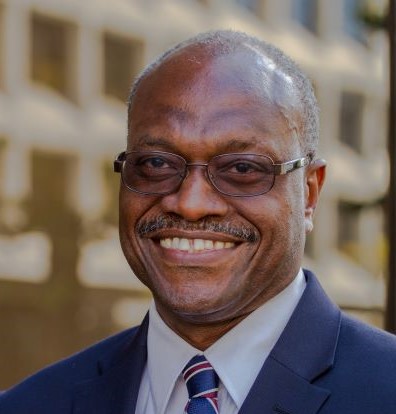February 09, 2022
Martin Luther King Jr. was assassinated in 1968 in Memphis, Tennessee while supporting striking Black sanitation workers. The workers were demanding recognition of their union, better safety standards, and a decent wage. With tragic irony, the night before King’s death, he reflected on the possibility that he might not live to see full racial and economic justice for Black people. He said:
Like anybody, I would like to live a long life. Longevity has its place. But I’m not concerned about that now. I just want to do God’s will. And He’s allowed me to go up to the mountain. And I’ve looked over. And I’ve seen the promised land. I may not get there with you. But I want you to know tonight, that we, as a people will get to the promised land.
In this present period, when the United States is once again retreating from the path to racial and economic justice by blocking voting rights and preventing working people from realizing their desires to form unions, it is fortifying to contemplate King’s words of optimism, sacrifice, and morality.
King, as well as other Civil Rights Movement leaders, were deeply concerned about economic justice. In the book, The March on Washington: Jobs, Freedom and the Forgotten History of the Civil Rights, William P. Jones documents the considerable labor movement connections of many Civil Rights leaders. In a 1961 address to the labor organization, the AFL-CIO, King clarified what his American dream is:
This will be the day when we shall bring into full realization the American dream—a dream yet unfilled. A dream of equality of opportunity, of privilege and property widely distributed; a dream of a land where men will not take necessities from the many to give luxuries to the few; a dream of a land where men will not argue that the color of a man’s skin determines the content of his character; a dream of a nation where all our gifts and resources are held not for ourselves alone but as instruments of service for the rest of humanity; the dream of a country where every man will respect the dignity and worth of human personality—that is the dream.
Many conservatives try to reduce King’s vision for racial and economic justice to a narrow idea of not seeing race or colorblindness. But as this passage reveals, for King, being judged by the content of your character depended on being granted “equality of opportunity” in a society with “privilege and property widely distributed.”
We are far from the society of equality of opportunity that King dreamed about. How far are we? DiversityDataKids.org, a project of the Heller School of Social Policy and Management at Brandeis University, has produced a Child Opportunity Index that allows us to concretely measure how we are doing at providing equal opportunity for children by race. The Index is a combined measure ranking neighborhoods by educational opportunities and resources, health and environmental conditions, and social and economic resources. The Child Opportunity Index scores range from 1, the lowest level of opportunity, to 100, the highest level. Each step in the score’s value covers 1 percent of all children. We know that children growing up in neighborhoods deprived of resources tend to have worse outcomes.
The researchers at DiversityDataKids.org compared child opportunity by race for the 100 largest metropolitan areas. This provides a good approximation for the country as a whole. When they ranked every neighborhood in these metro areas by its Child Opportunity Score, they found that the median Black child lives in a neighborhood that ranks at the 24th percentile in resources. The median white child lives in a neighborhood at the 73rd percentile. This is nowhere close to equal opportunity.
The researchers also show the distribution of children by Child Opportunity Level and race (see Figure). When they divide the Child Opportunity Scores into quintiles, they found that nearly half (46 percent) of Black children are in Very Low Opportunity neighborhoods. Another fifth (21 percent) are in Low Opportunity neighborhoods. In other words, the two thirds (67 percent) of Black children are in Very Low or Low Opportunity neighborhoods. In contrast, two thirds (65 percent) of white children are in Very High or High Opportunity neighborhoods. Again, this is nowhere close to equal opportunity.
Martin Luther King Jr. came face to face with more challenges to racial and economic progress than most of us see today, yet he managed to remain optimistic and to push on. Because he and many thousands of other Civil Rights activists, known and unknown, continued to push on, the country was able to move forward. It is therefore fitting to conclude with his final words of encouragement that he shared with the AFL-CIO:
And as we struggle to make racial and economic justice a reality, let us maintain faith in the future. We will confront difficulties and frustrating moments in the struggle to make justice a reality, but we must believe somehow that these problems can be solved.
There is a little song that we sing in the movement taking place in the South. It goes like this, “We shall overcome. We shall overcome.” Deep in my heart I do believe we shall overcome. And somehow all over America we must believe that we shall overcome and that these problems can be solved. They will be solved before the victory is won.






